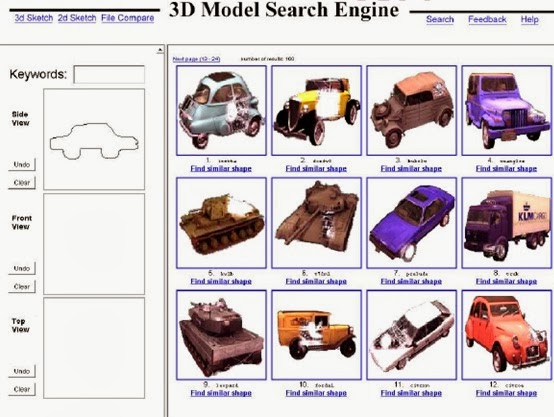INTRODUCTION:-
Computer affects our life in a much bigger way then most of us might have thought. It has become a compulsory requirement in most professions to be able to use computer software. The first computer invented was the ENIAC in 1943 which was the same size of a large room, consuming as much power as several hundred modern PCs. Modern computers which are based on integrated circuits are small enough to fit into mobile devices. One of the most compacted computers out right now are table computers with the most popular being the IPad, but even that is 9.1inch and weighing about 700grams. But imagine having a computer will fit on your pencil case.
P-ISM (“Pen-style Personal Networking Gadget Package”), which is nothing but the new discovery, which is under developing, stage by NEC Corporation. P-ISM is a gadget package including five functions: a pen-style cellular phone with a handwriting data input function, virtual keyboard, a very small projector, camera scanner, and personal ID key with cashless pass function. P-ISMs are connected with one another through short-range wireless technology. The whole set is also connected to the Internet through the cellular phone function. This personal gadget in a minimalist pen style enables the ultimate ubiquitous computing. It is shown below

P-ISM:
"P-ISM “Pen-style Personal Networking Gadget Package”. P-ISM is a gadget package including five functions
HISTORY:-
Origins: It seems to many of us these days that the pace of technological change is so great that it outstrips our imaginations — just as soon as we can conceive of the next nifty electronic gadget we'd like to have, we find out that somebody has already built it.
Miniaturized devices such as cameras and telephones are examples of now-common technologies that just a few years ago most of us rarely encountered outside the fictional world of spy thrillers. Miniaturized personal computers are the next logical step, but many readers might be surprised to learn that a plan for PC components housed in devices the size and shape of ballpoint pens (as shown above) was showcased by a major electronics company over two years ago.
At the 2003 ITU Telecom World exhibition held in Geneva, the Tokyo-based NEC corporation displayed a conceptual prototype of what they dubbed a "Pen-style Personal Networking Gadget Package," or P-ISM. As NEC described the P-

ISM:
P-ISM is a gadget package including five functions: a pen-style cellular phone with a handwriting data input function, virtual keyboard, a very small projector, camera scanner, and personal ID key with cashless pass function. P-ISMs are connected with one another through short-range wireless technology. The whole set is also connected to the Internet through the cellular phone function. This personal gadget in a minimalistic pen style enables the ultimate ubiquitous computing.
The P-ISM system was based on "low-cost electronic perception technology" produced by the San Jose, California, firm of Canesta, Inc., developers of technologies such as the "virtual keyboard" (although the last two pictures shown above appear to be virtual keyboard products sold by other companies such as VKB rather than components of the P-ISM prototype).
COMMUNICATION PEN:-
P-ISMs are connected with one another through short-range wireless technology. The whole set is also connected to the Internet through the cellular phone function. They are connected through Tri-wireless modes (Blue tooth, 802.11B/G, and Cellular) which are made small and kept in a small pen like device.
Connectivity 802.11B/G and Blue tooth:
In fact, no-one expects much activity on 802.11n installations until the middle of 2008. “Rolling out 802.11n would mean a big upgrade for customers who already have full Wi-Fi coverage, and would be a complex add-on to existing wired networks, for those who haven't. Bluetooth is widely used because we can able to transfer data or make connections without wires. This is very effective because we can able to connect whenever we need without having wires. They are used at the frequency band of 2.4 GHz ISM (although they use different access mechanisms).
Blue tooth mechanism is used for exchanging signal status information between two devices. This techniques have been developed that do not require communication between the two devices (such as Blue tooth’s Adaptive Frequency Hopping), the most efficient and comprehensive solution for the most serious problems can be accomplished by silicon vendors. They can implement information exchange capabilities within the designs of the Blue tooth. The circuit diagram for the 802.11B/G is given below. It is nothing but also type of Blue tooth. Using this connectivity we can also connect it with the internet and can access it anywhere in the world.
Conclusion:
The communication devices are becoming smaller and compact. This is only an example for the start of this new technology. We can expect more such developments in the future. By the human needs the communication devices are becoming smaller and compactable. PC are becoming smaller and smaller. We can see that the 5 pen pc technology is one of the advanced Portable PC that is easy to carry even in our pockets and work with it any where we want. This 'pen sort of instrument' produces both the monitor as well as the keyboard on any flat surfaces from where you can carry out functions you would normally do on your desktop computer. This has also Wi-Fi technology in which user can communicate through the internet, It’s another major advancement is the camera which can be used even for video conferencing. This is just a new start. We can expect much more advanced comfortable pc system in future.
